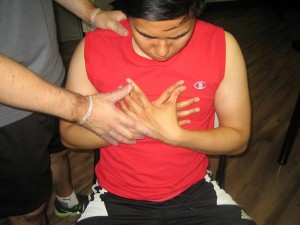Interstitial lung disease is a group of conditions affecting the interstitium which is a part of the anatomical structure of the lungs. Generally, it is lace-like structure of tissues that spreads to both lungs. It supports the microscopic air sacs of the lungs or alveoli. Small blood vessels are found in the interstitium, for proper exchange of gas between the blood and the air in the lungs. The interstitium is so small that it can be hardly seen on chest x-rays or CT scans.
Interstitial lung disease causes thickening of the interstitium due to scarring, edema and inflammation. Some types of this condition are short-lived but others are irreversible and chronic.
Types of interstitial lung disease
- Interstitial pneumonia- the interstitium becomes infected by viruses, bacteria or fungi.
- Idiopathic pulmonary fibrosis- a form of fibrosis of the interstitium that cause scarring of the area.
- Nonspecific interstitial pneumonitis- happens with autoimmune conditions such as scleroderma and rheumatoid arthritis.
Causes

- Inhaling talk, silica dust, asbestos, and coal dust in mining, grain dust from farming and proteins from birds such as chicken or pigeons.
- Previous trauma to the bladder
- Mast cell activation
- Leaking protective lining of the bladder which causes the toxic substance from urine to infect the bladder wall.
- Hereditary
- Allergies
- Autoimmune reaction
Symptoms
- Shortness of breath and eventually becomes worsen
- Dry and nonproductive coughing
- Fatigue and weakness
- Loss of appetite
- Loss of weight
- Labored breathing
- Hemorrhage in the lungs
- Discomfort in the chest
Treatment
- Take the prescribed antibiotics to eliminate bacteria that cause the interstitial pneumonias and lessen the pain.
- Prescribed corticosteroids to lessen the pain and the inflammation in the lungs and other areas of the body. It also lessens reactions of the immune system.
- If pain comes from the bladder wall, apply a heating pad or a hot water bottle to lessen the spasm of the muscles. Place a wet damp cloth between the skin and the heating pad to prevent burn and worsen the condition. Another alternative is using an ice pack or frozen water bottle to numb the area and lessen the pain. Wrap the ice pack in a towel or a cloth before placing to the area. Hot and cold pack can be applied alternately in the affected area every 20 minutes.
- Perform some gentle exercises such as gentle stretching and walking for at least 30 minutes. Another alternative is listening to relaxing music for at least 20 minutes to lessen stress.
- Perform yoga and deep breathing exercises to increase volume of the lungs and lessen symptoms due to difficulties in breathing and breathlessness.
- Consume a well balance diet. Eat a variety of fresh fruits and vegetables to increase immunity of the body and fight viral or bacterial infections that results to interstitial lung disease.
- Quit smoking to prevent further irritation on the lungs.
FACT CHECK
https://en.wikipedia.org/wiki/Interstitial_lung_disease